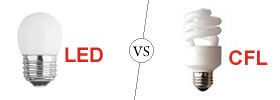Difference between Mosquito and Bed Bug Bites
Key difference: Mosquito bites are soft pale bumps that can become pink or red and itch. Bed bug bites are red bumps with a darker red spot in the middle, they are itchy and usually three in a row.
 Mosquitoes and bed bugs are both parasites that feed on humans among other mammals. Parasites are highly specialized in their nature and are very adaptive to their surroundings, their hosts and their hosts’ mode of life. Both, mosquitoes and bed bugs show these characteristics, as they feed on the blood of humans and other mammals.
Mosquitoes and bed bugs are both parasites that feed on humans among other mammals. Parasites are highly specialized in their nature and are very adaptive to their surroundings, their hosts and their hosts’ mode of life. Both, mosquitoes and bed bugs show these characteristics, as they feed on the blood of humans and other mammals.
Mosquitoes are small, flies like creatures. Some species of mosquitoes are harmless or even useful to humanity. However, most are useless, a nuisance and serve no actual need in the ecosystem. Mosquitoes actually feed on nectar and plant juices. The female mosquitoes usually feed on nectar, plant juices and blood. Females need the nutrients from a blood meal before they can produce eggs.
Mosquitoes have been known to transmit extremely harmful human and livestock diseases, such as malaria, dengue fever and West Nile virus. Mosquitoes are not easily eradicated, especially because of their large numbers. Due to these reasons, some authorities have argued that mosquitoes are the most dangerous creatures on Earth.
The bite of a mosquito looks like a soft pale bump, which may change to red or pink. The bump may occur immediately after the bite, or may take up to two days. The bump and the area around it may be itchy depending on the person’s sensitivity to mosquito bites. In rare cases, a mosquito bite may result in anaphylaxis, a serious allergic reaction that may result in swelling in the throat, significant hives and wheezing.

The bed bug is a reddish brown, oval and flat insect, shaped like an apple seed. The newly hatched bed bug nymphs are colorless and have a translucent exoskeleton. They usually live and hide in the cracks and crevices of beds, box springs, headboards and bed frames.
The bed bugs usually feed at night when the person in sleeping. The bite of a bed bug is usually red, and often has a darker red spot in the middle. The bites are mainly arranged in a cluster or a line pattern and they may or may not itch depending on the person. Bed bugs are known to bite on the face, neck, arms and hands of the person. Some people might have an allergic reaction to the bite that can include severe itching, blisters or hives.
A complete description and comparison of mosquito and bed bug bites:
|
|
Mosquito Bites |
Bed Bug Bites |
|
Description |
Small, flies like creatures. Females need blood to reproduce. Breed in stagnant or standing water. |
Bedbugs are reddish brown, oval and flat, about the size of an apple seed. They hide in the cracks and crevices of beds, box springs, headboards and bed frames. |
|
Feeding time |
Most active at dawn or dusk |
Most active at night while victim is sleeping |
|
Feeding pattern |
Random on exposed skin |
In a clusters, usually three bites in a row – “breakfast, lunch and dinner”. Usually on hands, arms, neck, face, front and back. |
|
Symptoms |
Soft pale bumps, redness, swelling and itching. Rare severe allergic reaction - swelling in the throat, significant hives and wheezing. |
Red bumps, often with a darker red spot in the middle, may or may not itch. Allergic reaction – severe itching, blisters or hives. |
|
Appearance of symptoms |
Immediately after bite |
A while after bite, gets worse over time. |
|
Resolution of bites |
2 – 10 days |
1 – 2 weeks |
|
Prevention |
Mosquito repellents, mosquito netting, protective clothing |
Wear covering garments while sleeping, pesticide permethrin on mosquito netting may keep them as bay. |
|
Treatments |
Oral antihistamines and topical lotions. |
Oral antihistamine, such as diphenhydramine (Benadryl), skin cream containing hydrocortisone |
|
Transmittable diseases |
West Nile virus, malaria and dengue fever. |
Bed bugs are not known to carry or transmit human diseases. |
Image Courtesy: affordablepest.com, pestid.msu.edu









Comments
Barbi
Tue, 08/18/2015 - 19:31
Anonymous
Thu, 09/24/2015 - 12:30
Add new comment